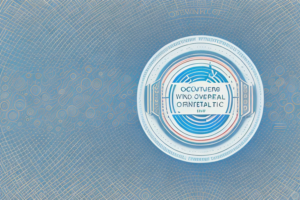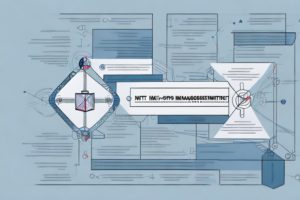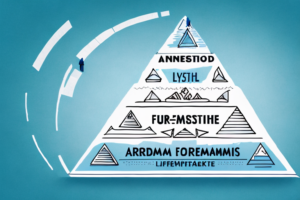What is the role of the Risk Management Framework?

A risk management framework
Risk management is an essential process in organizations that aim to mitigate risks to their assets, operations, and reputation. The Risk Management Framework (RMF) is a systematic approach to managing risk that provides a structured approach to identifying risks, analyzing their potential impact, and taking actions to mitigate them. The role of RMF is to ensure that organizations can manage risks effectively and efficiently while complying with relevant laws and regulations.
Understanding the basics of Risk Management Framework (RMF)
RMF is a comprehensive framework that provides a structured approach to managing the risks associated with an organization’s information system. The framework provides a step-by-step process for identifying, assessing, and mitigating risks, and it is based on a set of standards and guidelines that have been developed by the National Institute of Standards and Technology (NIST).
The key elements of the RMF include risk assessment, risk mitigation, and risk monitoring. The framework incorporates a continuous monitoring approach that ensures that any changes that might impact the organization’s risk profile are identified and addressed promptly.
One of the benefits of using the RMF is that it provides a common language and methodology for managing risks across an organization. This helps to ensure that all stakeholders are on the same page when it comes to identifying and addressing risks, and it can also help to streamline the risk management process. Additionally, the RMF is designed to be flexible and scalable, which means that it can be adapted to meet the specific needs of different organizations and information systems.
Why is Risk Management Framework important for organizations?
RMF is an essential tool for organizations because it provides a standardized, streamlined process for managing risk. By adopting the framework, organizations can identify and mitigate risks more effectively, minimize the likelihood of breaches, and protect their assets, operations, and reputation.
Furthermore, RMF is mandated by several laws and regulations, including the Federal Information Security Modernization Act (FISMA) and the Health Insurance Portability and Accountability Act (HIPAA). By complying with these regulations, organizations can avoid costly penalties and reputational damage.
Another benefit of implementing RMF is that it helps organizations to prioritize their security efforts. By conducting a thorough risk assessment, organizations can identify their most critical assets and focus their resources on protecting them. This approach ensures that organizations are not wasting time and money on low-priority risks, but instead are addressing the most significant threats to their operations.
Benefits of implementing Risk Management Framework
The benefits of implementing RMF include:
- Improved risk management
- Enhanced security posture
- Compliance with laws and regulations
- Reduced likelihood of breaches and cyber attacks
- Streamlined risk management process
- Improved efficiency and effectiveness of risk management activities
Another benefit of implementing RMF is that it provides a structured approach to risk management, which helps organizations to identify and prioritize risks more effectively. This, in turn, enables organizations to allocate resources more efficiently and effectively to manage risks. Additionally, RMF provides a framework for continuous monitoring and improvement of an organization’s risk management practices, which helps to ensure that risks are managed effectively over time.
How Risk Management Framework helps in identifying and mitigating risks
RMF provides a structured approach to identifying and mitigating risks by breaking down the risk management process into discrete steps. These steps include:
- Categorizing information and information systems
- Identifying and assessing risks
- Implementing controls to mitigate risks
- Monitoring risks and the effectiveness of controls
By following this process, organizations can identify and address risks systematically and proactively, reducing the likelihood of breaches and other security incidents.
Furthermore, the RMF approach also helps organizations to prioritize risks based on their potential impact and likelihood of occurrence. This enables organizations to allocate their resources more effectively and efficiently, focusing on the most critical risks first. Additionally, the RMF process is iterative, meaning that organizations can continuously assess and improve their risk management strategies over time, ensuring that they remain effective and up-to-date in the face of evolving threats.
Key components of the Risk Management Framework
The key components of the RMF include:
- A risk management process that is based on a set of standards and guidelines
- A continuous monitoring approach that ensures that risks and controls are monitored regularly
- A governance structure that provides oversight and accountability for risk management activities
- A risk management strategy that is tailored to the organization’s specific needs and requirements
- A risk management plan that outlines the actions that will be taken to mitigate risks
It is important to note that the RMF is not a one-time process, but rather an ongoing cycle of risk management activities. This includes identifying new risks, assessing their potential impact, implementing controls to mitigate those risks, and monitoring the effectiveness of those controls. By continuously evaluating and improving the risk management process, organizations can better protect themselves from potential threats and ensure the security of their assets and information.
Comparing traditional risk management approaches with RMF
Traditional risk management approaches tend to be ad hoc and reactive, and they often rely on subjective assessments of risk. RMF, on the other hand, is a structured and proactive approach that is based on a set of standards and guidelines. RMF incorporates a continuous monitoring approach that ensures that risks and controls are monitored regularly, and it provides a standardized process for managing risk that is tailored to the organization’s specific needs and requirements.
One of the key advantages of RMF is that it provides a framework for integrating risk management into an organization’s overall business strategy. By aligning risk management with business objectives, organizations can better prioritize risks and allocate resources more effectively. This can lead to more efficient and effective risk management, as well as improved business performance.
Another benefit of RMF is that it promotes collaboration and communication among stakeholders. By involving all relevant parties in the risk management process, including business owners, IT professionals, and security personnel, RMF helps to ensure that risks are identified and addressed in a timely and effective manner. This can help to reduce the likelihood and impact of security incidents, and improve overall organizational resilience.
Steps involved in implementing the Risk Management Framework
The steps involved in implementing the RMF include:
- Establishing a risk management program
- Categorizing information and information systems
- Selecting and implementing security controls
- Assessing security controls
- Auditing the security program
It is important to note that the implementation of RMF is an ongoing process that requires continuous monitoring, updating, and improvement.
Additionally, the RMF process involves identifying and documenting risks, developing and implementing risk mitigation strategies, and regularly reviewing and updating the risk management plan. It is also important to involve all stakeholders in the risk management process, including employees, contractors, and third-party vendors.
Challenges and obstacles in implementing RMF and how to overcome them
Some of the challenges and obstacles that organizations might face when implementing RMF include:
- Lack of resources and expertise
- Resistance to change
- Compliance with regulations
- Complexity of the framework
To overcome these challenges, organizations can adopt a proactive approach that involves establishing a risk management program, building awareness and support for the framework, investing in training and development, and seeking external support and guidance as needed.
Another challenge that organizations might face when implementing RMF is the lack of buy-in from key stakeholders. This can include senior management, employees, and external partners. Without their support, it can be difficult to implement the framework effectively and ensure that it is integrated into the organization’s culture and processes.
To overcome this challenge, organizations can engage with stakeholders early on in the process, communicate the benefits of the framework, and involve them in the development and implementation of the risk management program. This can help to build trust and support for the framework, and ensure that it is aligned with the organization’s goals and objectives.
Best practices for successful implementation of the Risk Management Framework
Best practices for successful implementation of RMF include:
- Establishing a risk management program
- Building awareness and support for the framework
- Investing in training and development
- Engaging with stakeholders
- Seeking external support and guidance as needed
Another important best practice for successful implementation of RMF is to regularly review and update the risk management plan. This ensures that the plan remains relevant and effective in addressing new and emerging risks. It is also important to establish clear communication channels and protocols for reporting and addressing risks in a timely manner. By regularly reviewing and updating the risk management plan and maintaining open communication, organizations can better mitigate risks and ensure the success of their RMF implementation.
Key considerations for selecting a suitable RMF framework for your organization
When selecting an RMF framework, organizations should consider:
- Alignment with the organization’s goals and objectives
- Applicability to the organization’s specific needs and requirements
- Usability and ease of implementation
- Integration with existing risk management processes and tools
- Cost and resource implications
Another important consideration when selecting an RMF framework is the level of support and guidance available from the framework’s developers or community. Organizations should ensure that they have access to adequate resources, such as documentation, training, and support forums, to help them effectively implement and maintain the framework. Additionally, organizations should consider the level of customization allowed by the framework, as this can impact the ability to tailor the framework to meet specific organizational needs.
How to integrate RMF into the overall risk management strategy of your organization
Integrating RMF into the overall risk management strategy of an organization involves:
- Building awareness and support for RMF among stakeholders
- Aligning RMF with other risk management processes and tools
- Ensuring that RMF is integrated into the organization’s governance structure
- Establishing a risk management program that aligns with RMF
Common misconceptions about RMF and their debunking
Some of the common misconceptions about RMF include:
- RMF is only relevant in the government or public sector
- RMF is a one-size-fits-all framework
- RMF is a static framework that does not adapt to changes in the risk environment
These misconceptions are untrue. RMF is relevant to any organization that wants to manage risk effectively, and it is a highly customizable framework that can be tailored to meet the specific needs and requirements of an organization. Furthermore, RMF incorporates a continuous monitoring approach that ensures that risk management activities are ongoing and responsive to changes in the risk environment.
The future of risk management with the continued evolution of RMF
The future of risk management is likely to involve greater automation and integration of risk management processes and tools. RMF is likely to continue evolving in response to changing risk environments and emerging technologies.
Case studies of successful implementation of RMF by different organizations
There are numerous case studies of successful implementation of RMF by different organizations. For example, the United States Department of Homeland Security has successfully implemented RMF to manage risks associated with its information systems, while the Alaska Department of Fish and Game has used RMF to manage risks associated with its critical infrastructure.
These case studies demonstrate the effectiveness of RMF in managing risks and protecting critical assets and operations.



